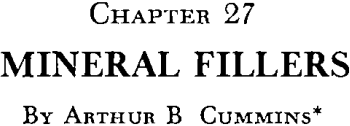Table of Contents
Powdered nonmetallic minerals and rocks of many different types are used extensively in industry for incorporation in compositions and manufactured products The term “mineral filler” is commonly employed to designate a material that is used for a specific purpose but not as an essential or reactive component Such a definition is not without objections, and it is indeed difficult to define fillers in any fully satisfactory manner, since the term has come to have so many different meanings and to cover such a wide range of uses.
Properties
The properties of milled mineral products that are of interest for their use as fillers are of two types (1) those inherent in the individual particles themselves; and (2) those associated with masses of particles. These properties may be considered as intrinsic or fundamental, on the one hand, and as secondary (or mass) properties, on the other. Both are important, since the judicious selection of fillers for particular applications depends upon the balance and coordination of these properties with those of the composition into which the fillers are incorporated. Numerous properties of technical significance for particular applications are not included in the listing below, but such properties are usually related to two or more of the primary or secondary properties given
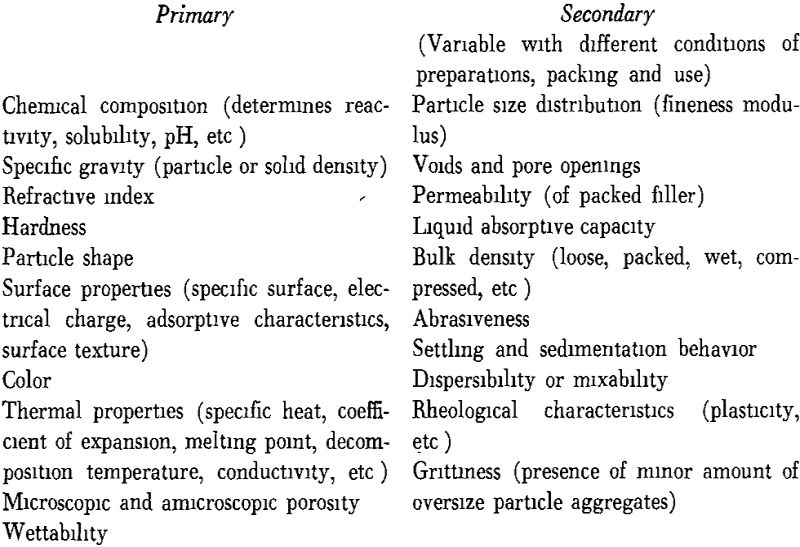
Some properties of the more important fillers are given in Table 1. The chemical composition of fillers ordinarily is less important than their physical properties, yet there are cases wherein composition is all important, since it determines solubility, reactivity, and other properties that may be critical
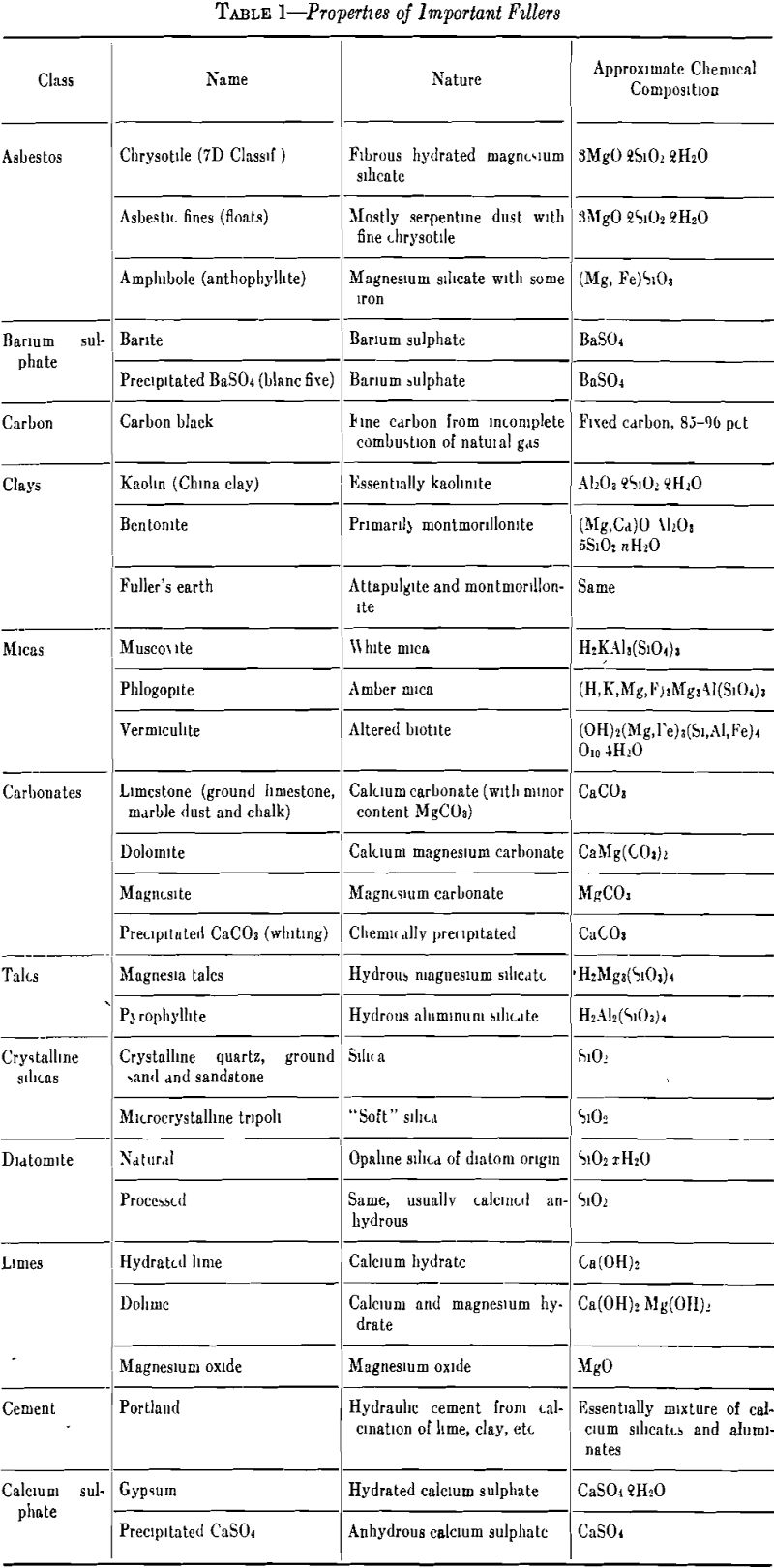
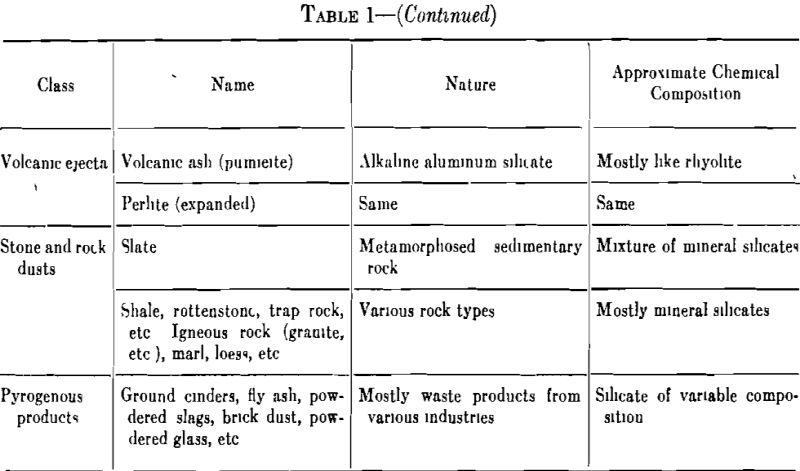
Materials Used as Fillers
Most of the nonmetallic industrial minerals, and many powdered rock products, have been employed to some extent at different times for numerous filler uses. These usages vary periodically, depending on availabilities, costs, technologic trends and advancements, and other factors. However, for the major applications and for the more particular requirements at any given period, there are some general trends which serve to favor a more or less restricted group of filler products for each of the major consumer fields. This selection of materials is determined by the characteristics of the individual filler products, their effectiveness in fulfilling the primary function or functions for which they may be employed, and the cost after incorporation in the finished product.
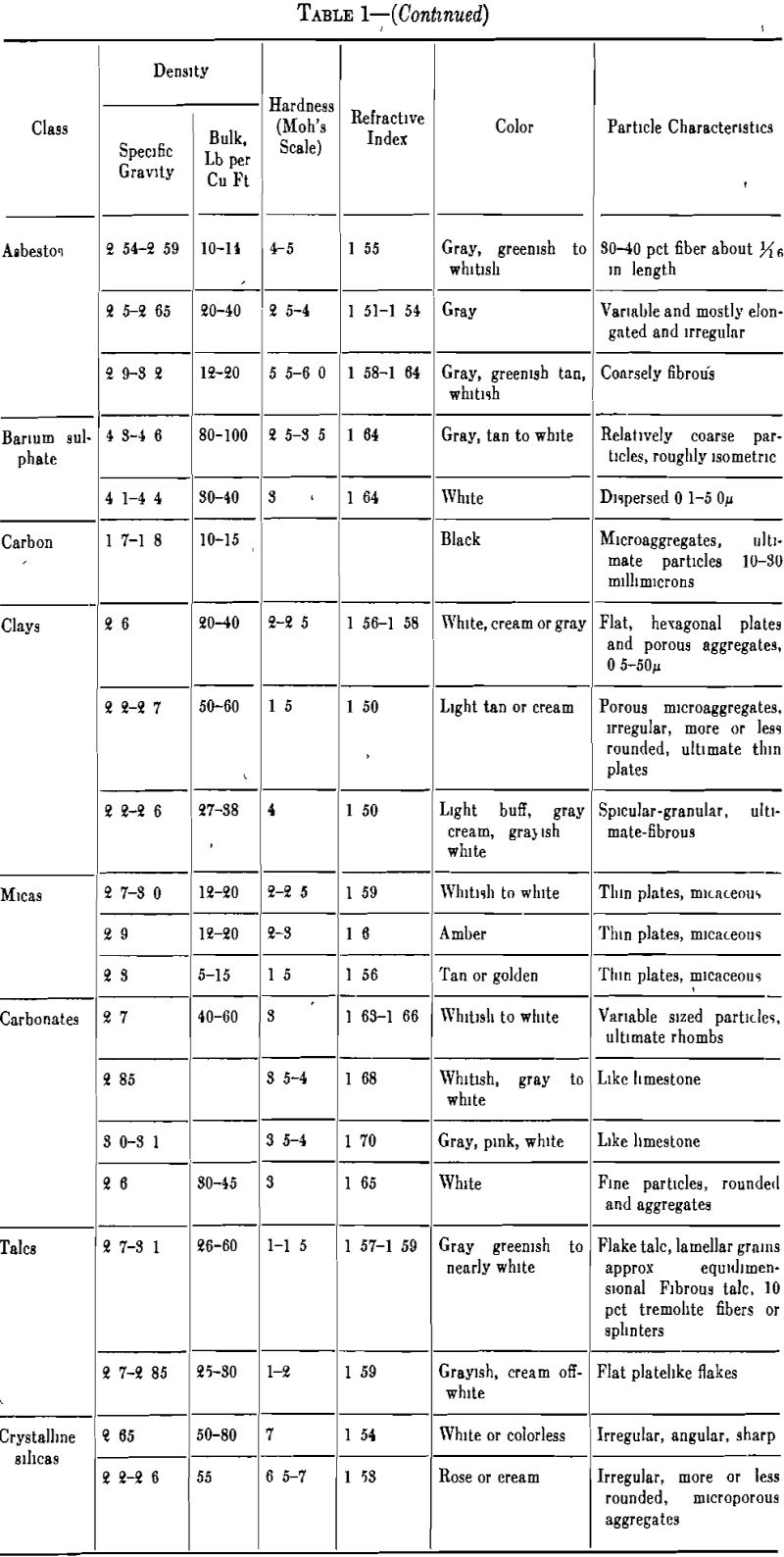
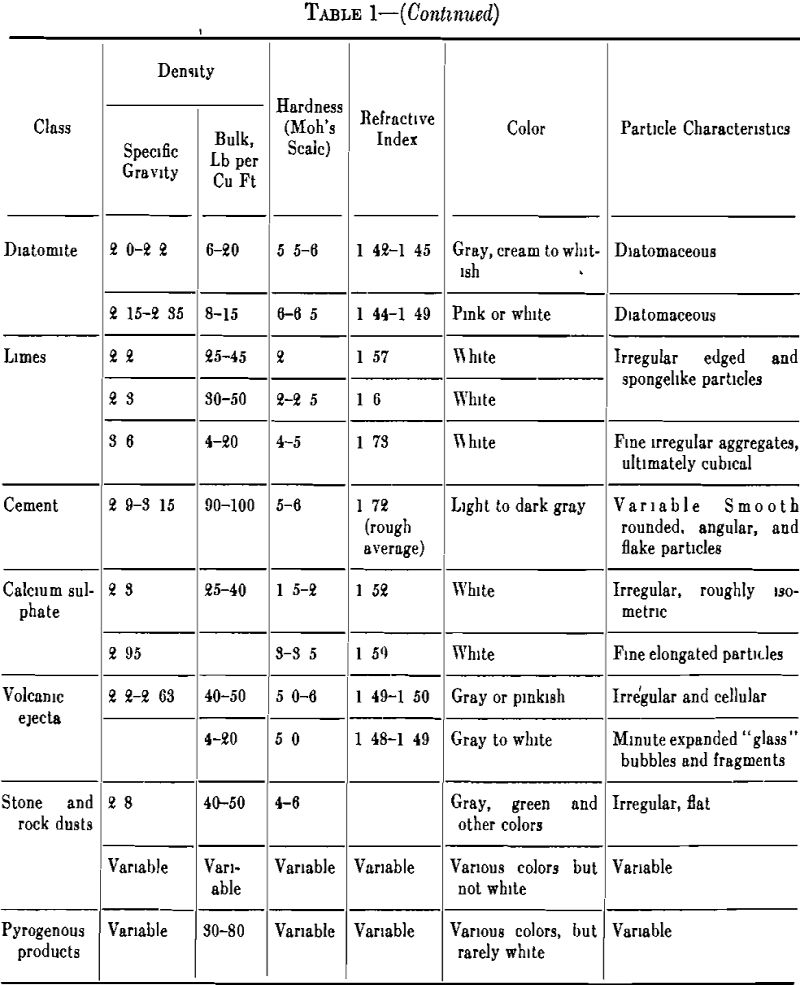
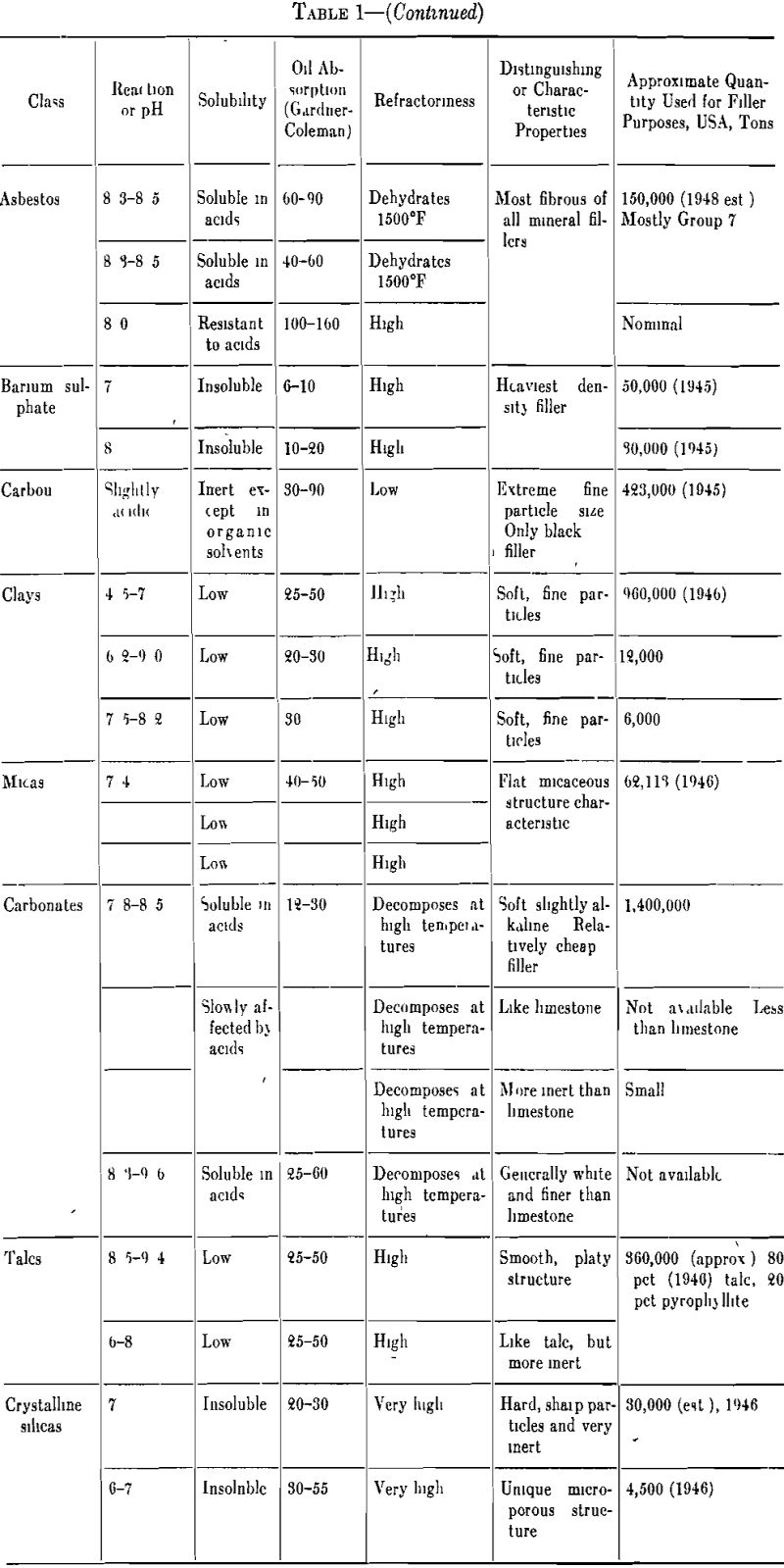
Mineral fillers may be modified to greater or less degree by methods directed toward coating the surfaces of the particles. Organic coatings, particularly stearic acid and resinous compounds, are employed success-
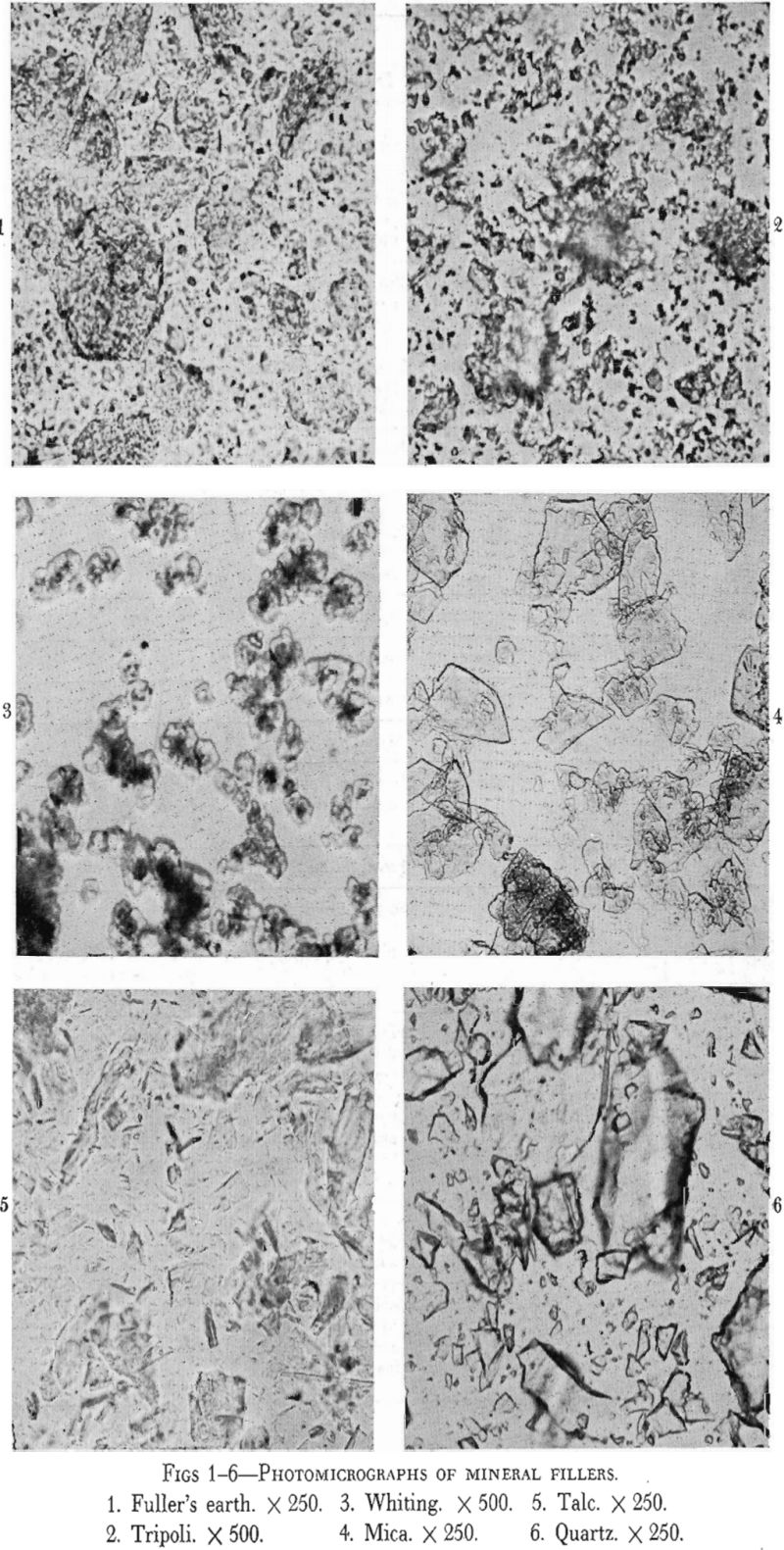
fully for treating calcium carbonate fillers. These coatings usually are applied by dry methods. Thin films of calcium soap or resinate are formed on the surfaces and have extended the usefulness of whiting for many filler purposes. For use in rubber, the stearate coating is preferred, whereas for paints the resinate coating appears more advantageous. Clay, silicas and other mineral fillers may be surface-treated in similar manner.
Major Fields of use for Mineral Fillers
The large filler-consuming industries, all of which take substantial, tonnages, are bituminous compositions, paper, protective and decorative coatings, plastics and molded compositions, rubber, fertilizers and pesticides. Of somewhat less importance are textiles, floor coverings, cosmetics, light-weight compositions, welding rods, waxes, loose fills, stock feeds, and others. There are a considerable number of minor uses, some of which are of considerable technical importance and interest but which do not involve large tonnages. In addition, many usages and applications of industrial minerals are somewhat related to strict filler usages or may be borderline filler uses. Some of these involve considerable tonnages of mineral products, the preparation, testing, and marketing of which is much the same as for filler products. Examples of these are lubricants, antisticking agents, surface coatings, supports and carriers, mold washes and parting compounds, anticaking agents, absorbents, putties, components of abrasive compositions, soaps, insulations, cements, mortars and concretes, and conditioner for molding sands. Only brief discussion of the major uses can be given
Bituminous Compositions
Mineral fillers are used extensively in paving mixtures, in surfacing for asphaltic concrete, for sheet roofing and shingles, bituminous cements, enamels and lacquers, floor tile, mastics, expansion joints, molded bituminous compositions such as battery boxes and for bulk revetments.
Fillers fulfill several important functions in bituminous compositions. Their effect is to increase the melting or softening points, increase viscosity, extend the “plastic range,” increase hardness, increase stability, increase tensile strength, augment weather resistance and minimize checking and cracking.
Paper
The use of mineral fillers in paper manufacture is general, some being used in nearly all papers. “Coating” is the term employed for the application of a mixture of mineral-pigment adhesive to the surface of a sheet. When the mineral agents are added to the furnish (usually at the beater), they are considered to be fillers or loading materials. Fillers function in paper to fill voids between the fibrous particles. In this way they improve the printing quality by increasing opacity, improve the texture or “feel,” impart a better finish on calendering and increase the weight of the finished sheet
Pesticides
The use of insecticide dusts and pesticide dusting powders generally has been increasing steadily. In the trade, mineral powders used in combination with active toxicants are usually referred to as diluents. These are necessary with expensive insecticides, to provide effective distribution of the poisonous principle, and in other cases to effect the necessary economy. Other functions of the diluent are to improve adherence to foliage, to control drifting, and in some cases to increase the lethal effect of the toxicant. Insecticide dusts are applied by hand and power-driven ground machines and by airplane and autogiro. Materials most commonly used are clays, talcs, fuller’s earth, diatomite, gypsum, lime, and pyrophyllite.
Fertilizers
The practice of adding inert mineral matter to commercial fertilizers has been on the decrease for the past decade. However, more than 1,000,000 tons per annum has been employed in the recent years of high production for mixed fertilizers. “Sand,” dolomite, limestone and gypsum are the major materials used. Small tonnages of peat and peanut-hull meal are employed. An important use for mineral powders, as well as for some other materials, in fertilizers is to prevent hard caking and to maintain drillability. Calcium cyanamid, neutral phosphate, processed tankage and some relatively inert organic materials, such as crop residues and peat, are employed for this purpose.
